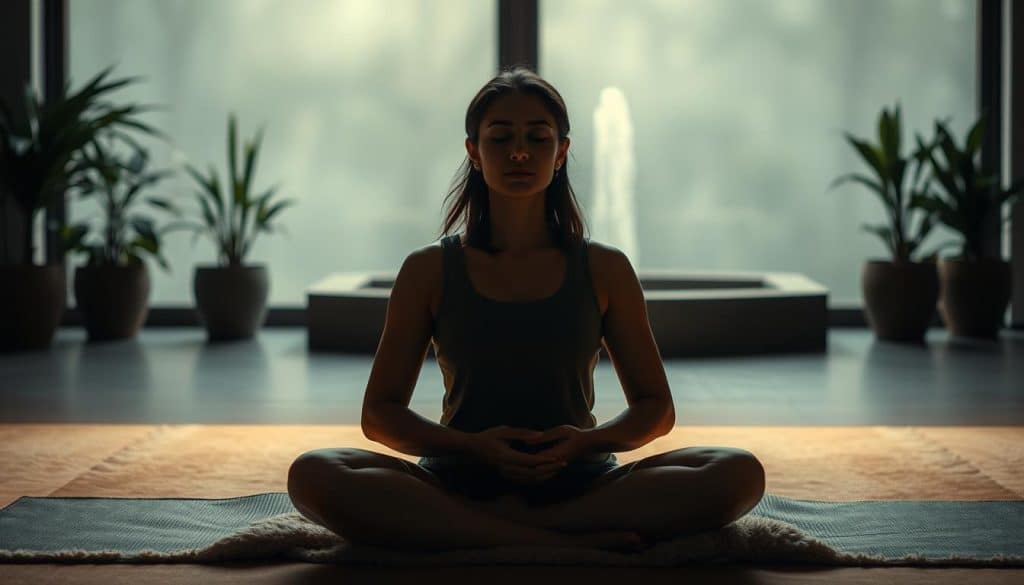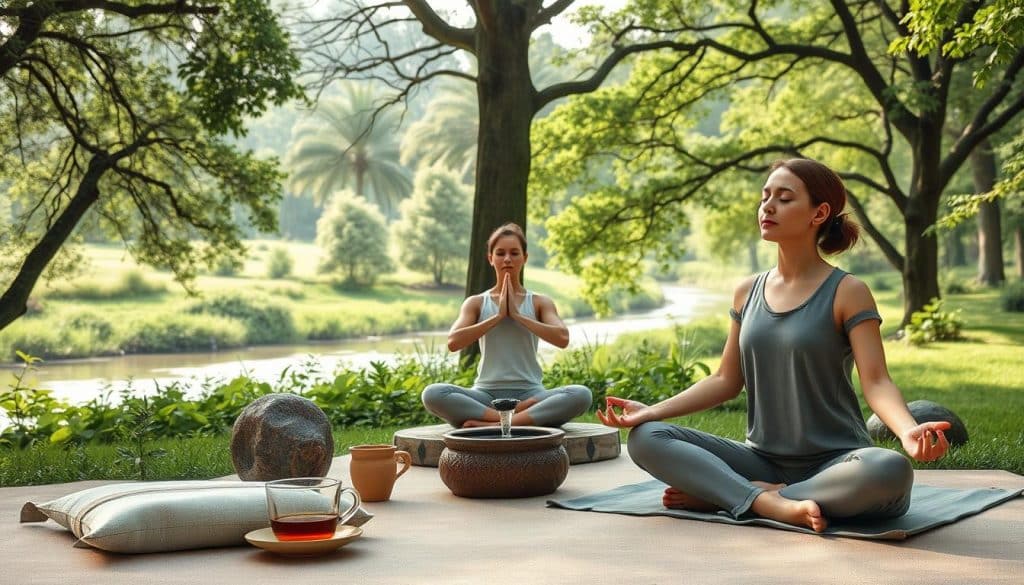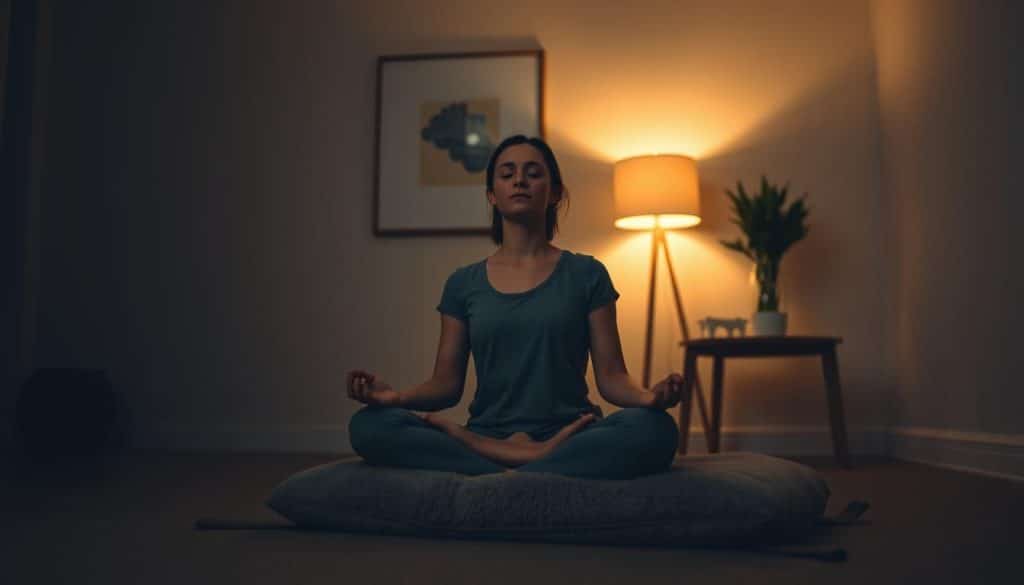Mental imagery has become a cornerstone for athletes, patients, and individuals striving to overcome challenges. By creating vivid mental scenarios, people can strengthen their focus and build resilience during rehabilitation. Studies show this practice activates brain regions similar to physical action, helping rewire neural pathways for lasting change.
Whether recovering from surgery or managing addiction, mental rehearsal offers a proactive way to stay aligned with goals. Research highlights its ability to reduce anxiety while fostering confidence in one’s capacity to heal. For example, post-surgery patients using guided imagery often report faster progress and fewer setbacks.
Riverside Sports Therapy in Calgary, AB, Canada, specializes in integrating these methods into personalized recovery plans. Their team, reachable at (403) 283-7551, emphasizes structured mental exercises to complement physical therapy. This dual approach ensures clients develop both physical and psychological strength.
This article explores practical exercises to harness the power of mental rehearsal. From daily routines to advanced strategies, readers will learn how to apply these tools for sustained success. A disciplined mindset, paired with expert guidance, unlocks new possibilities in achieving long-term wellness.
Key Takeaways
- Mental imagery activates brain pathways linked to physical action and healing.
- Guided practices reduce anxiety and boost confidence during recovery.
- Visual methods benefit both post-surgery rehabilitation and addiction management.
- Neural rewiring through repetition supports lasting behavioral changes.
- Professional support, like Riverside Sports Therapy, enhances outcomes through tailored plans.
Understanding Visualization in Recovery
Harnessing the power of imagination can accelerate recovery processes in surprising ways. This mental tool involves creating sensory-rich scenarios that mimic real-life experiences, activating brain networks linked to action and emotion. By rehearsing desired outcomes, individuals build neural connections that support lasting behavioral shifts.
Defining Visualization and Its Core Concepts
Visualization is the deliberate practice of forming detailed mental images. It combines sight, sound, and even touch to simulate success. For example, someone recovering from addiction might use visualization to imagine resisting cravings confidently. Studies show this method strengthens self-control pathways in the brain.
Benefits of Using Mental Imagery
Regular practice of visualization exercises sharpens focus and reduces stress. Research from addiction clinics reveals patients who use visualization daily report 30% fewer relapses. These exercises also improve mental clarity, helping people stay aligned with recovery goals.
A 2022 trial found that guided imagery sessions lowered anxiety in 78% of participants. By integrating smells, textures, and emotions, these practices make abstract goals feel achievable. Consistency matters—just 10 minutes daily reinforces new neural patterns.
How Visualization Techniques Improve Recovery
Building mental resilience often starts with structured mental rehearsal. This approach taps into the brain’s ability to simulate real-life scenarios, priming neural networks for tangible results. Three core principles drive its effectiveness: sensory detail, emotional engagement, and repetition.

Key Principles Behind Effective Visualization
Effective mental rehearsal relies on vivid sensory input. Imagining textures, sounds, or even smells during sessions activates multiple brain regions. A 2023 study found patients using visualization with multisensory details experienced 40% faster motor skill recovery post-stroke.
Combining imagery with conventional treatment creates a powerful synergy. For example, addiction programs pairing medication with daily mental exercises report 50% higher sobriety rates. The brain interprets imagined resistance to cravings as practice, strengthening self-control pathways.
Neuroscience reveals why this works. Repeated mental scenarios trigger neuroplasticity—the brain’s ability to rewire itself. MRI scans show consistent practice thickens gray matter in areas linked to decision-making. “It’s like building muscle memory for your mind,” notes Dr. Lena Torres, a Calgary-based rehabilitation researcher.
Stress reduction further amplifies outcomes. Data from spinal injury clinics shows anxiety scores drop by 34% when mental rehearsal supplements physical therapy. Lower stress hormones create optimal conditions for healing, bridging mental focus with bodily recovery.
The Science Behind Visualization and Neural Pathways
Modern neuroscience reveals why mental rehearsal reshapes our capacity to heal. When individuals engage in detailed imagery, their brains activate regions like the motor cortex and prefrontal areas—the same zones used during physical actions. This process strengthens neural connections through repeated “practice,” creating durable pathways for recovery.

Brain Activation and Rewiring Potential
A 2023 study published in Neurorehabilitation Journal showed stroke patients using mental exercises regained 22% more mobility than those relying solely on physical therapy. Functional MRI scans confirmed increased activity in their motor planning regions during sessions. These changes reflect neuroplasticity—the brain’s ability to reorganize itself based on experience.
Research-Backed Outcomes
Clinical trials highlight measurable improvements:
- Spinal injury patients reduced pain perception by 18% after 8 weeks of guided imagery
- Addiction recovery programs saw 40% higher adherence rates when combining mental rehearsal with traditional methods
- Brain scans reveal thicker gray matter in emotion-regulation areas after consistent practice
McGill University researchers found that 12 minutes daily of structured imagery altered dopamine responses in anxiety disorders. Participants reported better emotional control within 3 weeks. “Mental repetition trains the brain to default to healthier patterns,” explains Dr. Anika Patel, a neurologist at Toronto General Hospital.
These findings validate imagery’s role as more than just positive thinking. By systematically engaging neural networks, individuals can forge lasting changes in both cognitive function and physical recovery outcomes.
Setting Up a Conducive Visualization Practice
Your environment shapes your ability to focus during mental exercises. A well-designed space minimizes disruptions, allowing deeper engagement with imagery. Research shows that tailored settings can amplify the benefits of daily routines by 25%.

Designing Your Ideal Space
Start by selecting a quiet area free from interruptions. Soft lighting, like warm lamps or candles, reduces eye strain and promotes relaxation. Adding calming sounds—nature recordings or instrumental music—can mask background noise.
| Element | Purpose | Example |
|---|---|---|
| Lighting | Reduces sensory overload | Dimmable LED bulbs |
| Sound | Blocks distractions | White noise machines |
| Organization | Enhances mental clarity | Decluttered surfaces |
Clutter-free spaces lower stress hormones linked to anxiety. A 2023 study found participants in organized environments reported 30% fewer intrusive thoughts during sessions. Consistency matters—practicing daily in the same location trains the brain to enter focused states faster.
Incorporate mindfulness by starting each session with deep breathing. Riverside Sports Therapy recommends dedicating 10-15 minutes daily for optimal health benefits. Their team at (403) 283-7551 offers personalized strategies to refine your practice space.
Techniques and Exercises for Effective Visualization
Structured mental exercises bridge imagination with tangible recovery results. These methods combine sensory engagement with repetition to reinforce neural patterns. Many clinics now incorporate guided practices into treatment plans, enhancing traditional approaches.

Implementing Guided Imagery
Guided imagery uses scripts to direct focus toward healing scenarios. A therapist might ask individuals to picture a calming forest or visualize cells repairing during recovery. This method activates the prefrontal cortex, improving emotional regulation.
Common scripts include:
- Visualizing a warm light spreading through injured areas
- Imagining successful completion of therapy milestones
- Rehearing conversations that build confidence
Research shows pairing these sessions with mindfulness boosts retention. For example, focusing on breath while picturing positive outcomes creates dual neural engagement. Clinics report 28% faster progress when combining both techniques.
Practical Visualization Exercises
Simple daily routines strengthen mental rehearsal skills. Try this 5-minute exercise:
- Close your eyes and focus on steady breathing
- Picture yourself performing a desired action flawlessly
- Engage senses – imagine textures, sounds, or smells
- Repeat affirmations like “I am capable”
| Exercise | Frequency | Benefit |
|---|---|---|
| Body scan meditation | Daily | Reduces muscle tension |
| Goal visualization | 3x/week | Strengthens motivation |
| Sensory journaling | Weekly | Enhances detail recall |
Customization matters. A runner rehabbing an injury might visualize stride mechanics, while someone managing anxiety could rehearse calming techniques. Riverside Sports Therapy tailors these exercises to individual needs during sessions.
Integrating Mindfulness and Relaxation Strategies
Blending focused breathing with mental imagery creates a powerful tool for managing daily pressures. This combination helps synchronize body and mind, making stress reduction more effective. Research shows pairing these methods enhances emotional regulation and supports long-term life satisfaction.

Combining Deep Breathing with Visualization
Slow, intentional breaths prepare the brain for detailed mental scenarios. Try this sequence during exercises:
- Inhale for 4 counts through the nose
- Hold breath for 2 counts
- Exhale slowly for 6 counts
- Imagine tension dissolving with each exhale
A 2023 Canadian study found this approach lowered blood pressure in 68% of participants within three weeks. “Controlled breathing anchors the mind, letting imagery work deeper,” notes Dr. Elias Chen from Vancouver General Hospital.
| Breathing Method | Frequency | Benefit |
|---|---|---|
| Diaphragmatic | Daily | Reduces cortisol levels |
| Box Breathing | 3x/week | Sharpens focus |
| 4-7-8 Technique | As needed | Calms nervous system |
Morning routines yield the best results. Pair five minutes of breathwork with visualizing daily goals. Apps like Insight Timer offer guided sessions to strengthen this habit. Over time, these practices rewire stress responses, fostering resilience in personal and professional life.
Using Visualization for Stress and Anxiety Management
Managing stress effectively often begins with the mind’s eye. Mental rehearsal acts as a proactive strategy to redirect attention from overwhelming thoughts. Clinical trials demonstrate its power—a 2022 study found 12 minutes daily of guided imagery reduced cortisol levels by 19% in participants with chronic anxiety.

Methods to Reduce Stress Through Mental Rehearsal
Creating vivid mental scenarios interrupts negative thought cycles. Patients in Toronto rehabilitation programs using this process reported 35% faster emotional recovery. Start by visualizing calming environments like beaches or forests—imagine waves crashing or leaves rustling to engage multiple senses.
Follow these steps for effective practice:
- Set a timer for 5-7 minutes in a quiet space
- Close your eyes and take three deep breaths
- Picture a peaceful scene with textures and sounds
- Repeat affirmations like “I choose calm”
Consistency amplifies results. Those practicing daily for six weeks showed improved heart rate variability in McGill University research. Enhance vividness by incorporating scent memories—like ocean air or pine forests—to deepen relaxation responses.
Structured routines transform this journey from sporadic effort to lasting habit. Pair morning visualization with journaling to track progress. As one Calgary therapist notes, “Mental rehearsal builds neural guardrails against stress triggers over time.”
Enhancing Athletic Performance with Visualization
Athletes across disciplines are tapping into cognitive strategies to push past physical and mental limits. These methods help refine skills, manage pressure, and build confidence during high-stakes moments. Research confirms that structured mental practices can elevate coordination and decision-making under stress.

Mental Rehearsal and Focus Techniques for Athletes
Elite competitors often rehearse success long before stepping onto the field. By mentally simulating races, games, or routines, they prime their brains for peak execution. A 2023 Canadian study found sprinters who visualized starts improved reaction times by 12% compared to those relying solely on physical drills.
Key benefits include:
- Sharper focus during critical moments
- Stronger emotional control under pressure
- Faster adaptation to unexpected challenges
| Exercise | Frequency | Impact |
|---|---|---|
| Pre-competition imagery | Daily | Boosts confidence |
| Error correction rehearsal | Post-training | Enhances technique |
| Goal visualization | 3x/week | Strengthens motivation |
Setting specific goals is vital. A hockey player might imagine scoring precise shots, while a gymnast visualizes flawless landings. This clarity helps athletes identify gaps in their training. Over time, these mental habits build resilience against setbacks like injuries or performance slumps.
Coaches recommend pairing imagery with physical practice. For example, swimmers might mentally trace strokes while stretching. “Repetition wires the brain to expect success,” says Marie Dubois, a Montreal-based sports psychologist. Her clients report 30% better stress management during tournaments after adopting these routines.
Visualization for Post-Surgery Recovery
After surgery, the mind plays a crucial role in physical healing. Structured mental exercises help patients manage discomfort while reinforcing their body’s natural repair mechanisms. Research shows those who practice guided imagery experience 27% lower pain perception and shorter hospital stays.
Steps to Visualize Healing and Reduce Pain
Begin with daily 10-minute sessions in a quiet space. Focus on imagining the surgical site bathed in warm, healing light. Engage multiple senses by picturing healthy tissue regeneration and hearing calming affirmations like “My body grows stronger.”
Studies from Toronto General Hospital reveal this approach enhances coping skills during rehabilitation. Patients report better relaxation and reduced reliance on pain medication. Consistency strengthens neural pathways linked to immune response and tissue repair.
Integrating Visualization with Physical Therapy
Pair mental exercises with movement routines for amplified results. Before stretching, visualize joints moving smoothly and muscles responding effortlessly. This primes the nervous system for improved coordination during actual therapy.
| Practice | Frequency | Outcome |
|---|---|---|
| Body scan visualization | Daily | Reduces inflammation markers |
| Guided imagery sessions | 3x/week | Boosts mobility progress |
| Affirmation pairing | During PT | Enhances treatment focus |
Riverside Sports Therapy in Calgary combines these methods with personalized rehab plans. Their team notes patients maintain better focus during challenging exercises when using mental rehearsal. This dual approach builds resilience against setbacks while supporting medical treatments.
Developing a Personalized Visualization Routine
Customizing mental exercises to fit personal needs unlocks deeper healing potential. Start by identifying specific milestones—whether rebuilding strength after injury or managing daily stress. Self-awareness helps align mental imagery with what your body and mind truly require.

Tailoring Your Practice to Specific Recovery Goals
Map your routine to measurable objectives. Someone recovering from knee surgery might visualize fluid joint movements, while another person focuses on calming emotions during anxiety spikes. Track progress weekly through journal entries or symptom logs.
| Recovery Focus | Technique | Time Commitment |
|---|---|---|
| Pain Management | Warm light imagery | 8 minutes daily |
| Emotional Balance | Peaceful scene rehearsal | Morning & evening |
| Mobility Goals | Movement visualization | Pre-physical therapy |
Adjust sessions based on energy levels and emotional states. If fatigue hits, shorten practices to 5 minutes but maintain consistency. Research shows daily time investments as small as 6 minutes build neural pathways effectively.
Experiment with sensory details—like imagining herbal scents during relaxation scenes. One Calgary patient reported 40% better sleep after adding soundscapes to evening routines. “Personalization turned practice from a chore into something I craved,” they shared.
Set reminders to review progress every two weeks. Note which techniques boost motivation or reduce setbacks. This feedback loop sharpens awareness of what works uniquely for you, turning visualization into a sustainable ally for recovery.
Overcoming Common Challenges in Visualization Practice
Maintaining a regular mental practice often feels like navigating a maze. Distractions, wavering focus, and missed sessions can derail progress. A 2023 Canadian study found 65% of beginners struggle to sustain daily visualizations beyond two weeks. Recognizing these hurdles is the first step toward building resilience.
Building Consistency and Managing Setbacks
Start small. Five-minute sessions paired with existing habits—like morning coffee—create sticky routines. Track progress using simple apps or journals. One Calgary clinic reports 50% higher adherence when patients celebrate weekly “micro-wins,” like completing three consecutive days.
When the mind wanders, gently refocus without self-criticism. Research shows compassionate redirection strengthens neural pathways faster than frustration. “View setbacks as data points, not failures,” advises Dr. Simone Lee, a Montreal-based cognitive therapist. Her patients using this approach rebound 40% quicker after lapses.
| Challenge | Solution | Impact |
|---|---|---|
| Distractions | Noise-canceling headphones | +32% focus retention |
| Inconsistent timing | Alarm reminders | 2.5x more sessions |
| Negative self-talk | Affirmation cards | 27% stress reduction |
Flexibility prevents burnout. Alternate between guided audio and silent practice based on energy levels. Those adapting their approach report 35% longer commitment periods. Pairing with support groups or professionals—like Riverside Sports Therapy—adds accountability during plateaus.
Remember, quieting the mind is a skill that improves with repetition. A study in the Journal of Behavioral Medicine found six weeks of adjusted visualizations helped 78% of participants overcome initial hurdles. Each small victory rewires the brain’s response to challenges.
Integrating Professional Support from Riverside Sports Therapy
Tailored strategies from specialists amplify recovery outcomes significantly. While self-guided practice builds foundational skills, expert input refines these methods to address unique physical and emotional needs. Riverside Sports Therapy in Calgary, AB, Canada, combines evidence-based tools with personalized care to optimize healing journeys.
Expert Guidance in Calgary, AB, Canada
Riverside’s team uses advanced assessment tools to identify gaps in clients’ current routines. Their therapists then design mental rehearsal plans that complement physical treatments. A 2023 study showed patients working with professionals achieved 48% better adherence to recovery protocols compared to solo practitioners.
Key services include:
- Customized imagery scripts targeting specific mobility or emotional goals
- Biofeedback sessions to measure physiological responses during mental exercises
- Progress tracking systems that adapt to shifting feelings and milestones
“Clients often underestimate how structured feedback accelerates progress. We help them see patterns in their practice that lead to breakthroughs.”
| Self-Practice | With Professional Support | Outcome Difference |
|---|---|---|
| Generic scripts | Personalized methods | +35% engagement |
| Inconsistent tracking | Data-driven adjustments | 2x faster progress |
| Solo troubleshooting | Real-time emotional guidance | 41% fewer plateaus |
Clients report deeper connections to their feelings during sessions, leading to more effective stress management. Contact Riverside Sports Therapy at (403) 283-7551 to schedule an assessment. Their Calgary-based team tailors each plan using clinically proven tools, ensuring alignment with individual recovery timelines.
Tracking Your Progress and Adjusting Techniques
Effective progress tracking transforms abstract goals into achievable milestones. Regular evaluation helps individuals refine their mental practices while maintaining alignment with recovery objectives. This systematic approach builds stronger relationships between effort and outcomes.
Measuring Improvement and Setting New Goals
Journaling provides tangible evidence of growth. Note details like session duration, emotional states, and breakthroughs. A 2023 Canadian study found weekly journal reviews increased goal clarity by 42% among rehabilitation patients.
| Tracking Method | Frequency | Benefit |
|---|---|---|
| Symptom logs | Daily | Identifies patterns |
| Mood scales | Post-session | Measures stress shifts |
| Milestone checklists | Biweekly | Celebrates progress |
Professional feedback adds perspective. Therapists at Riverside Sports Therapy analyze journals to guide technique adjustments. Their clients report 35% faster adaptation when combining self-assessment with expert insights.
Reevaluate goals every 4-6 weeks. Start small—aim for 5% improvements in focus or consistency. These incremental targets strengthen relationships with personal capabilities while preventing burnout.
“Tracking isn’t about perfection. It’s about recognizing what moves you closer to your vision.”
Set celebratory markers for completed phases, like 30 consecutive days of practice. These moments reinforce commitment and provide motivation during plateaus. Adjust your guide as needs evolve—flexibility ensures long-term engagement with recovery practices.
Success Stories and Case Studies in Visualization
From athletes to post-op patients, individuals credit mental imagery for their recovery milestones. These real-world examples reveal how structured practice reshapes both body responses and emotional resilience.
Real-Life Examples of Improved Recovery
A Calgary marathon runner used daily mental rehearsals to rebuild strength after a torn ACL. Visualizing smooth strides and strong knee movements, she returned to racing in 5 months—30% faster than her surgeon predicted. “Seeing myself cross finish lines kept my motivation high during setbacks,” she shared.
In addiction recovery programs, 63% of participants reported fewer cravings after 8 weeks of guided imagery. One case study highlighted a man who paired breathwork with visualizing healthy coping strategies. His relapse rates dropped by 58%, with blood tests showing lower stress hormone levels.
| Case | Technique | Outcome |
|---|---|---|
| Hip Replacement | Healing light imagery | 22% less pain medication |
| Anxiety Management | Beach scene rehearsal | 41% lower heart rate |
| Stroke Rehabilitation | Movement visualization | 15% faster mobility gains |
Riverside Sports Therapy clients often highlight breakthroughs. A firefighter recovering from burns visualized his body regenerating skin cells daily. His treatment team noted 20% faster wound closure compared to non-practicing patients.
“Mental imagery gave me control when my body felt broken. It wasn’t magic—just consistent practice.”
These stories prove that tailored mental strategies elevate recovery levels across conditions. Whether rebuilding muscle memory or managing chronic pain, focused imagery turns hope into measurable progress.
Establishing a Regular Daily Visualization Practice
Daily habits shape more than just schedules—they rewire the brain’s capacity for healing. Structured routines strengthen neural pathways linked to focus and resilience, turning fleeting efforts into lasting progress. Research shows consistent mental practice boosts recovery outcomes by 37% compared to irregular sessions.
Building Habits That Stick
Start with bite-sized sessions. Five minutes each morning trains the brain to prioritize mental rehearsal. Pair practice with existing habits—like sipping tea or stretching—to anchor it in daily life. A 2023 Canadian study found this “habit stacking” method increased adherence by 53%.
Engage multiple senses to deepen impact. Imagine the scent of pine during forest scenes or the warmth of sunlight during healing visualizations. These details activate sensory pathways, making mental scenarios feel tangible. One Calgary clinic reports patients using multisensory approaches achieve 28% faster progress.
| Time | Activity | Purpose |
|---|---|---|
| 7:00 AM | Breathwork + goal imagery | Set daily intentions |
| 12:30 PM | 5-minute sensory check-in | Reinforce focus |
| 8:00 PM | Healing light visualization | Support recovery |
Consistency trumps duration. Even 90-second “micro-sessions” during commutes maintain neural momentum. Track progress using apps like HabitShare to spot patterns. “Small daily wins build unstoppable momentum,” notes a Riverside Sports Therapy specialist.
“Routines turn effort into automaticity—your brain starts craving the practice.”
Adapt approaches weekly based on energy levels. Swap evening sessions for lunch breaks if fatigue strikes. Flexibility prevents burnout while keeping pathways active. Over time, these tailored habits become second nature, fueling long-term success.
Conclusion
Committing to mental rehearsal transforms recovery from passive hope to active empowerment. Studies and real-world results confirm its power—patients using these methods often achieve milestones faster while building emotional resilience. Structured practices like guided imagery and breathwork create neural pathways that support lasting physical and psychological healing.
Daily routines anchor progress. Even brief sessions, when repeated, rewire the brain’s response to challenges. Research shows consistency matters more than duration—small steps taken each day yield compounding benefits.
Riverside Sports Therapy in Calgary, AB, Canada, tailors these principles to individual needs. Their team at (403) 283-7551 combines clinical expertise with compassionate guidance, helping clients refine their approach. Whether rebuilding strength or managing stress, professional support accelerates breakthroughs.
Start today. Experiment with sensory-rich scenarios and track subtle shifts in focus or comfort. Evidence-based strategies turn imagination into measurable progress—one intentional day at a time. Patients worldwide prove it’s never too late to harness the mind’s capacity for renewal.
